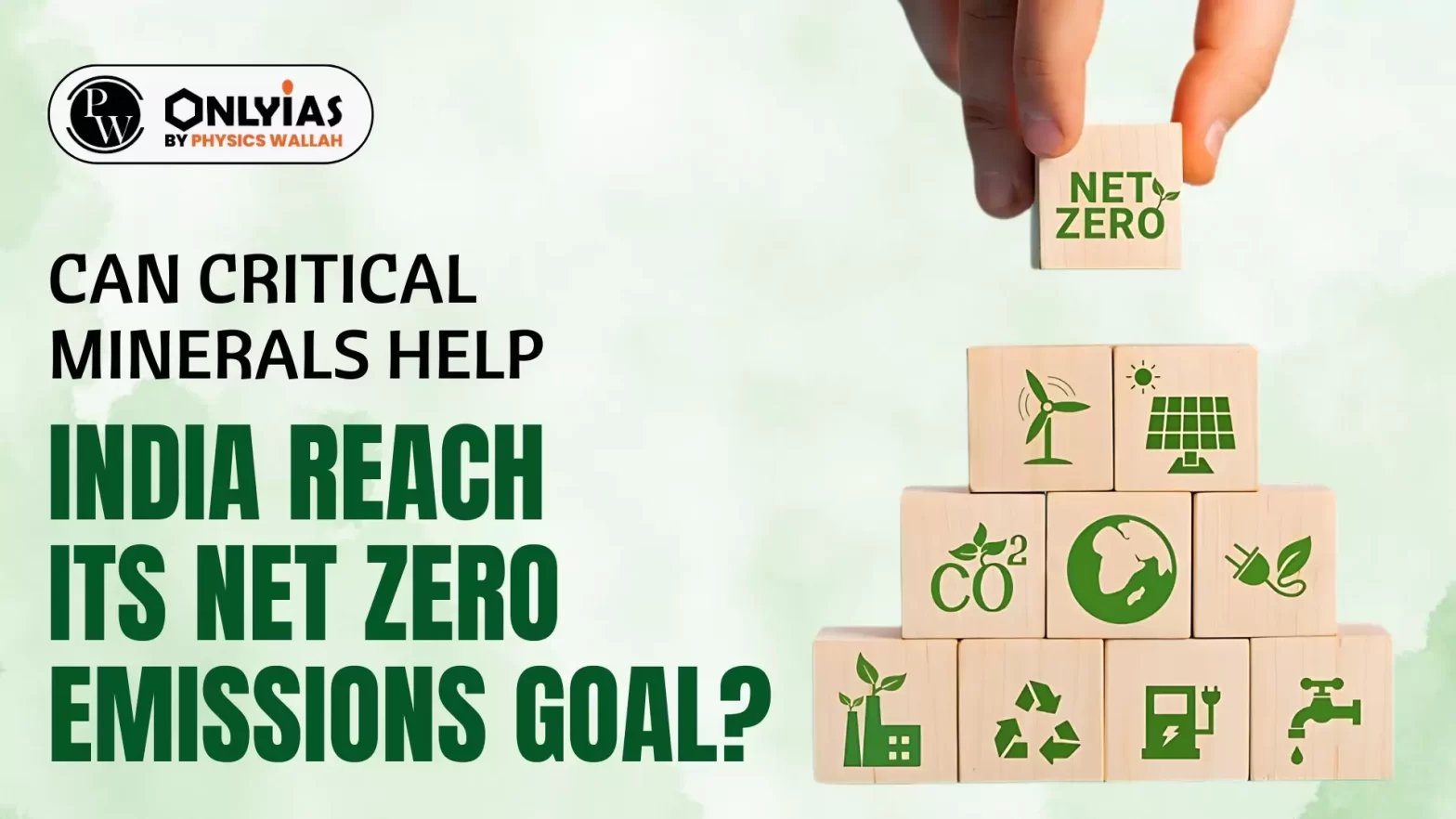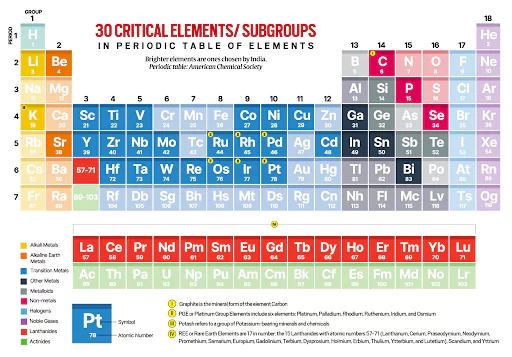![]() 7 Mar 2024
7 Mar 2024

This editorial is based on the news “The biggest roadblock to India’s net-zero goal” which was published in the Indian Express. Critical Minerals are significant in achieving the Net-zero goal of India.
| Relevancy for Prelims: Clean Energy Share In India, Critical Mineral Supplies Vital To Clean Energy Shift, Renewable Energy Intermittency, and India’s Budget And The Move Towards Net-Zero.
Relevancy for Mains: Conservation, Environmental Pollution and Degradation. |
|---|
Rare Earth Minerals in india
|
|---|

Need For the Critical Minerals
|
|---|
There is a big fear that lack of access to critical minerals may be the biggest roadblock to India’s march towards decarbonisation.
| Prelims PYQ (2020):
Which one of the following statements best describes the term ‘Social Cost of Carbon’? It is a measure, in monetary value, of the (a) long-term damage done by a tonne of CO2 emissions in a given year. (b) requirement of fossil fuels for a country to provide goods and services to its citizens, based on the burning of those fuels. (c) efforts put in by a climate refugee to adapt to live in a new place. (d) contribution of an individual person to the carbon footprint on the planet Earth. Ans: (a) |
|---|
| Must Read | |
| NCERT Notes For UPSC | UPSC Daily Current Affairs |
| UPSC Blogs | UPSC Daily Editorials |
| Daily Current Affairs Quiz | Daily Main Answer Writing |
| UPSC Mains Previous Year Papers | UPSC Test Series 2024 |

<div class="new-fform">
</div>